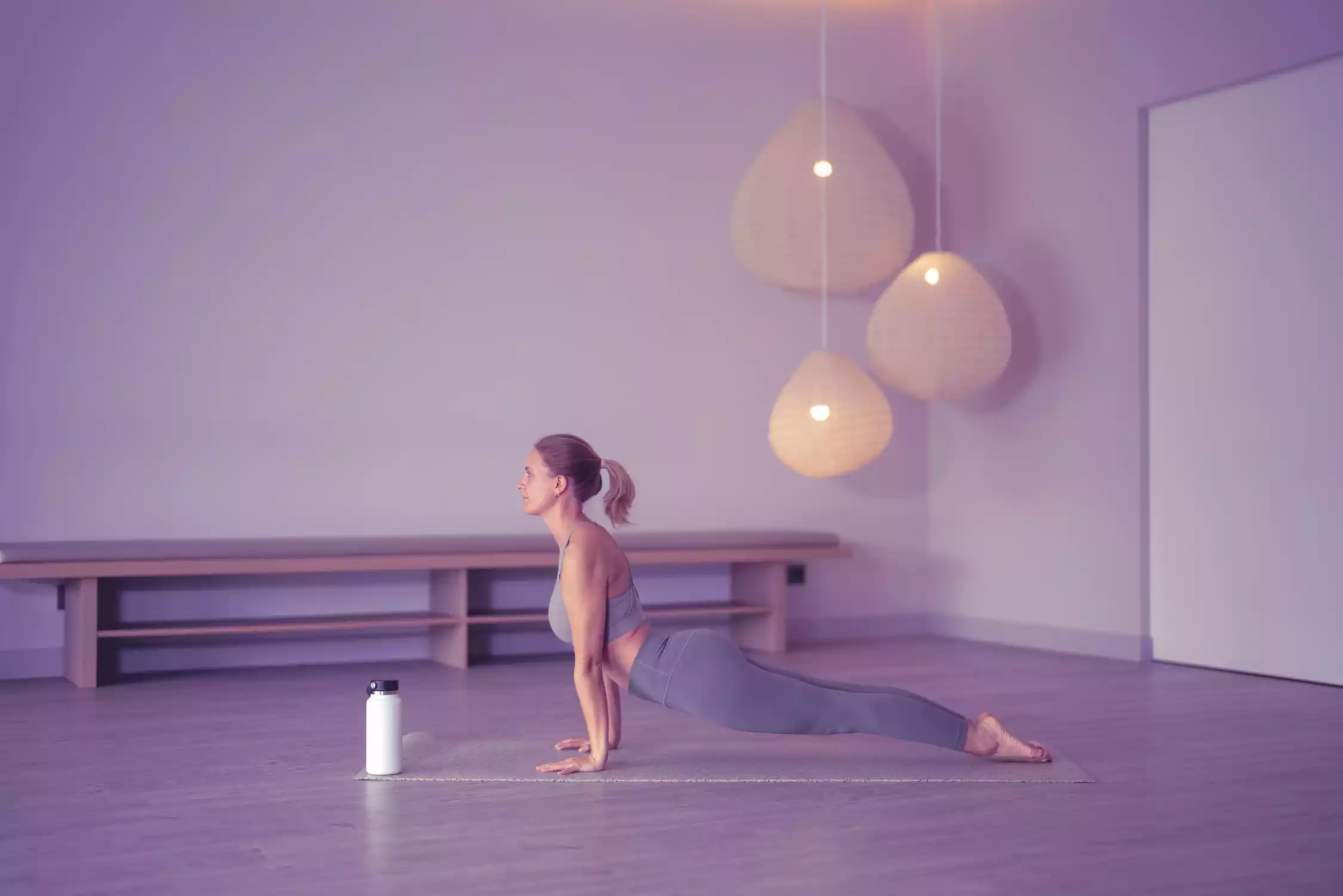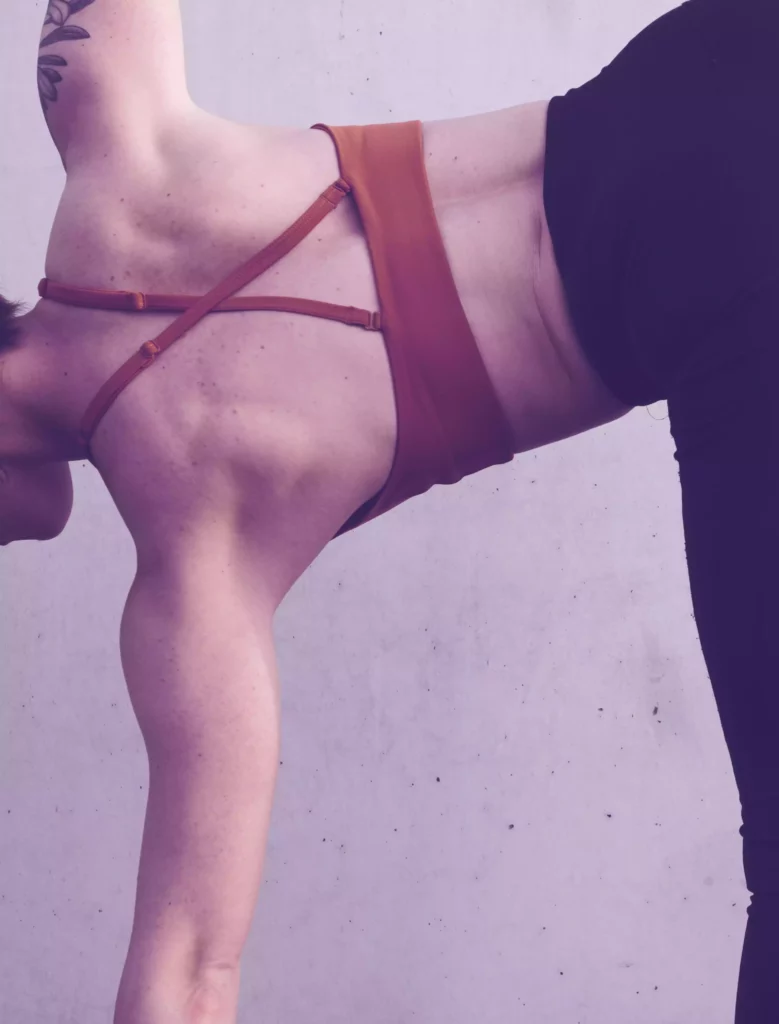Stretching isn’t just for physical activity; it can also improve your singing voice. Performing simple stretching exercises before you sing can help alleviate tension and promote good vocal technique that will allow you to reach higher notes, project more volume and deliver powerful performances with less effort.
How does stretching help singers?
Stretching exercises can be beneficial to singers in many ways.
They help improve posture, increase flexibility and range of motion, relax the muscles used during singing, reduce tension and stress within the body, improve breathing capacity and create a sense of balance between breath support muscles. Regular stretching helps keep your vocal cords healthy as well as improving your overall performance capability.
“Stretching is a critical aspect of warmup and a healthy daily routine for any singer” offers founder Katrina Pfitzner. “It’s important to stretch your body comfortably, safely, and only as often as you feel comfortable.”
For singers wanting to increase their range or refresh themselves for a vocal performance, stretching often makes an ideal warm-up routine before singing begins. Many voice teachers will recommend stretching exercises particularly when introducing new repertoire or working on extending range safely with beginners.
Stretching also serves an important role in preparing for any physical activity involving the use of our bodies- including singing!
“Stretching is a critical aspect of warmup and a healthy daily routine for any singer”
Katrina Pfitzner, founder
What kind of stretches are good for singers?
There are different types of stretches which target different aspects that may be beneficial for singers.
Some stretches that may be good for singers include targeted stretches for specific muscles and joints, dynamic stretches which involve moving the body in an active manner rather than simply holding a pose (think ‘warming up’ type movements), whole-body stretching as well as breathing exercises to promote relaxation/tension relief.
Targeted (or Static) Stretches
This refers to stretches that target specific muscles used during singing. These muscles can be specifically targeted with stretches to promote flexibility, range of motion and relaxation. These include stretching the chest wall, abdominal muscles as well as neck and shoulder girdle (the area where your shoulders connect to the back).
Some common targeted stretches for singers:
- Chest wall stretch: Hold your arms out in front of you at shoulder level and open them out wide as far as is comfortable. You should feel a gentle pull/stretch across the chest muscles.
- Upper back stretch: Sit or stand with your arms crossed in front of you. Slowly lift your arms up while keeping your back straight, feeling a stretch across your upper back.
- Abdominal stretch: While sitting with legs crossed, fingers locked behind head to support it and elbows pulled back slightly, gently lean backward while keeping spine straight until a gentle stretching sensation is felt across your abdomen.
- Trapezius stretch: Sit or stand with good posture and gently tilt your head to one side, bringing your ear towards your shoulder. You should feel a stretch along the side of your neck and shoulder.
- Neck and shoulder girdle: Sitting in a chair press your chin down towards your chest. You should feel the muscles of your neck stretching.
- Side stretch: Stand with feet shoulder-width apart and reach one arm up and over your head, leaning to the opposite side. You should feel a stretch along the side of your body.
- Lunging hip flexor stretch: Step forward into a lunge position with one foot in front and one foot behind you. Slowly lower your back knee to the ground and push your hips forward, feeling a stretch in the front of your hip.
It’s important to hold each stretch for at least 30 seconds and to never push past the point of discomfort. Stretching regularly can help improve flexibility, range of motion, and overall vocal performance.
Dynamic Stretches for Singers
Dynamic stretches involve controlled and repeated movements which focus more on ‘warming up’ muscles in the body to help them become more extended. These are active, controlled stretches which involve moving parts of the body rather than holding still to stretch.
These dynamic stretches help to increase blood flow and flexibility in the muscles, preparing them for singing and reducing the risk of injury. They are best done before a vocal warm-up or rehearsal session. Remember to always listen to your body and not push yourself too far during any stretching routine.
Some dynamic stretches for singers:
Arm circles: Stand with feet shoulder-width apart and extend your arms out to the sides. Start making circles with your arms, first small and gradually increasing the size of the circles. This helps to warm up and loosen the shoulder joints.
Neck rolls: Slowly roll your head in a circular motion, first in one direction and then the other. This helps to loosen up the neck muscles and improve neck mobility.
Torso twists: Stand with feet hip-width apart and arms extended out to the sides. Twist your torso from side to side, allowing your arms to follow the movement. This helps warm up the spine and core muscles.
Shoulder rolls: Roll your shoulders forward and backward in a circular motion to loosen up the shoulder girdle.
High knees: While standing in place, lift your knees as high as you can, alternating between legs.
Butt kicks: While standing in place, kick your heels up towards your buttocks, alternating between legs.
Leg swings: Stand next to a wall or stable surface for support. Swing one leg forward and backward in a controlled manner, allowing the hip flexors and hamstrings to loosen up.
Ankle rolls: Sit on the floor with legs extended. Slowly rotate your ankles in a circular motion, first in one direction and then the other. This helps to warm up and loosen the ankle joints
Hip circles: Stand with feet hip-width apart and place your hands on your hips. Make circular movements with your hips, first in one direction and then the other. This helps to warm up the hip joints and lower back.
Dynamic stretching involves movement of muscles rather than just holding a pose; this kind of stretching is usually done before engaging in physical activity (such as singing) because it helps increase blood flow throughout body parts used during performance, increases flexibility and range of motion while also readying our bodies physically for upcoming activities.
Dynamic exercises are best performed prior to singing as they prepare the muscles ready for use; they can also be beneficial during a break between sets or songs in order to avoid straining or fatigue.
Dynamic stretching also helps with growing accustomed to sustained movement while exercising good posture throughout a dynamic activity, such as performing onstage.
Whole Body Stretching for Singers
This involves stretching the whole body, focusing especially on areas that support our breath during singing by loosening up arms, legs and any other muscle groups used in performance.
Some whole body stretches for Singers
Remember to breathe deeply and mindfully.
Forward Fold: Stand with your feet hip-width apart and slowly bend forward at the waist, reaching towards the floor. Allow your head and neck to relax. This stretch helps to release tension in the back, hamstrings, and shoulders.
Cat-Cow Stretch: Start on your hands and knees, with your wrists directly under your shoulders and knees under your hips. Inhale as you arch your back, lifting your head and tailbone towards the ceiling (cow pose). Exhale as you round your spine, tucking your chin to your chest (cat pose). Repeat in a flowing motion.
Downward dog: Start on your hands and knees, then lift your hips up and back, forming an inverted V shape with your body. This stretches the back, shoulders, and hamstrings.
Child’s pose: Begin on your hands and knees, then sit back on your heels with your arms stretched out in front of you. This stretch helps to release tension in the back and shoulders.
Standing Side Stretch: Stand with your feet hip-width apart and reach your arms overhead. Gently lean to one side, feeling a stretch along the side of your body. Hold for a few breaths, then switch to the other side.
These stretches can be done to promote relaxation before a vocal performance or between sets while allowing one’s muscles some rest from use.
Breathing Exercises for Singers
Breathing exercises involve deep inhalation/exhalation techniques which help relax and energize the body as well as reducing tension within it.
Breathing is a foundational aspect of singing, and proper breath support is essential for producing strong, controlled vocals.
Here are some breathing exercises for singers
Diaphragmatic breathing: Also known as belly breathing, this exercise focuses on engaging the diaphragm to take deep breaths. Place one hand on your chest and the other on your stomach. Inhale deeply through your nose, feeling your stomach rise as you fill your lungs with air. Exhale slowly through your mouth, feeling your stomach fall. Repeat this several times to practice diaphragmatic breathing.
Straw breathing: Take a drinking straw and place it in your mouth. Inhale deeply through the straw, focusing on maintaining steady airflow. Exhale slowly and controlled through the straw. This exercise helps to regulate breath control and support.
Box breathing: This exercise involves inhaling, holding the breath, exhaling, and holding the breath again in equal counts (e.g. inhale for 4 counts, hold for 4 counts, exhale for 4 counts, hold for 4 counts). Box breathing can help improve breath control and relaxation.
Lip trills: Create a buzzing sound by blowing air through slightly pursed lips. This exercise helps engage the diaphragm and encourages breath control.
Siren exercises: Start from your lowest comfortable note and gradually slide up smoothly to your highest comfortable note and back down. This exercise helps with breath control, vocal range, and flexibility.
Ha-ka-ka-ka: Inhale deeply and then exhale sharply on the “ha” sound, followed by three short “ka” sounds. This exercise helps with breath control and coordination.
Five-Seven-Eight: Inhale for a count of five, hold for a count of seven, and exhale for a count of eight. This exercise helps to extend the exhalation phase and increase lung capacity.
Roll-down exercise: Stand up straight, inhale deeply, and as you exhale, tuck your chin to your chest and slowly roll down through your spine, reaching for your toes. Roll back up to standing as you inhale. This exercise helps to engage the core muscles and release tension in the body.
Breath focus: Sit or lie down in a comfortable position and close your eyes. Focus on your breathing, paying attention to the sensation of air entering and leaving your body. This mindfulness exercise helps to center you and improve breath awareness.
They are particularly useful when we feel ‘frazzled’ mentally or find ourselves with shallow breathing due to poor posture or lack of concentration; they guide us towards building more awareness of our diaphragm (the primary area where we should be initiating movement from) and how it moves both upon inhaling/exhaling air (we want this movement to originate mainly from here).
In addition to dedicated breathing exercises, incorporating mindfulness and relaxation techniques can also be beneficial for singers. These practices can help reduce tension, increase body awareness, and improve overall vocal performance.
Mindfulness and relaxation techniques for singers
These breathing exercises are beneficial for singers as they help improve breath support, control, and overall vocal technique. Practicing these exercises regularly can help increase lung capacity, reduce vocal strain, and improve vocal performance. It’s important for singers to incorporate these breathing exercises into their warm-up routine before practice or performances to ensure optimal vocal health and performance.
Mindfulness meditation: Practicing mindfulness meditation can help singers become more aware of their breath, body sensations, and emotions. This can aid in releasing tension and improving vocal performance.
Progressive muscle relaxation: This technique involves tensing and then relaxing various muscle groups in the body, helping to release physical tension and promote relaxation. This can be particularly helpful for singers who may hold tension in their neck, shoulders, or jaw.
Visualization: Visualizing a successful performance or vocal technique can help singers build confidence and focus. By mentally rehearsing challenging vocal passages or performances, singers can improve their overall performance quality.
Yoga: Incorporating yoga into a singer’s routine can help improve physical and mental well-being. Yoga poses can help stretch and strengthen the body, improve posture, and promote relaxation. Breathing techniques used in yoga can also benefit singers in controlling their breath and supporting their voice.
By incorporating these mindfulness and relaxation techniques into their practice routine, singers can enhance their vocal performance and overall well-being. It’s important to find what works best for each individual singer and to consistently practice these techniques to see improvement in vocal technique and performance.
Next Steps
It is always recommended that before experimenting with any exercises that you consult with a professional who has had a chance to hear and understands your voice. As always, it may be suggested to consult with a medical professional if you have any concerns about the health of your voice.





